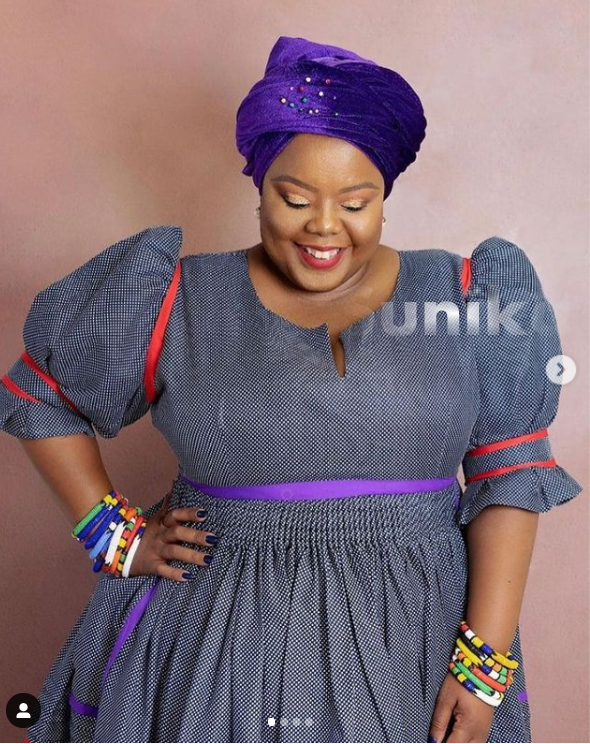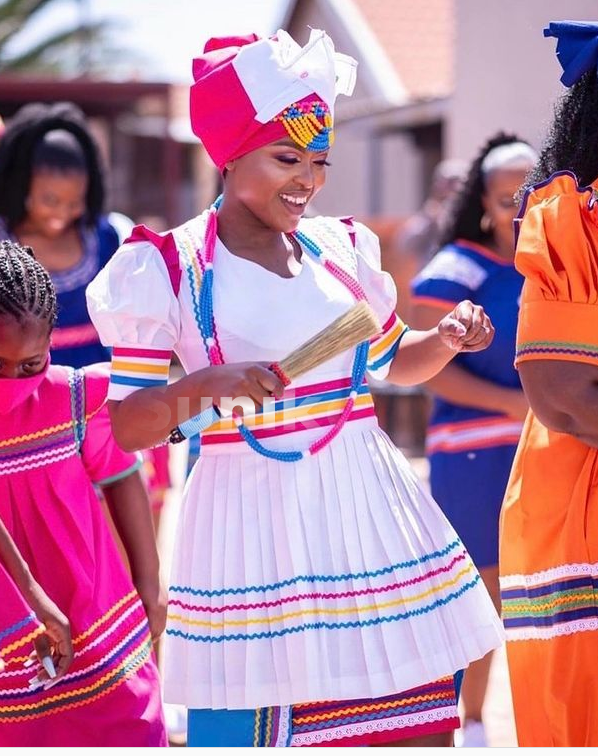
SePedi Makoti Dresses
In the diverse landscape of South African culture, the Sepedi makoti dress stands as a testament to the rich heritage and traditions of the Sepedi people. Rooted in centuries-old customs and beliefs, these dresses symbolize far more than just fashion; they are a reflection of identity, pride, and cultural unity. Let’s delve into the captivating world of Sepedi makoti dresses, exploring their origins, design elements, and enduring significance in Sepedi society.
Origins and Cultural Significance
The term “makoti” holds deep meaning in Sepedi culture, signifying a bride or daughter-in-law. Thus, the makoti dress carries profound significance, particularly in wedding ceremonies where it serves as a visual representation of respect, honor, and transition. When a woman becomes a makoti, she dons this special attire not only to celebrate her union but also to pay homage to her familial roots and ancestors.
Design Elements
Sepedi makoti dresses are renowned for their exquisite craftsmanship, intricate detailing, and vibrant colors. Traditionally, these dresses are made from high-quality fabrics such as vibrant Shweshwe or richly textured Seshoeshoe cloth, adorned with intricate beadwork, embroidery, or hand-painted motifs. Each element of the dress is carefully chosen to convey specific cultural meanings and symbolisms, often reflecting themes of fertility, prosperity, and unity.
The silhouette of a Sepedi makoti dress typically features a fitted bodice and a voluminous skirt, creating a regal and graceful appearance. The neckline and sleeves may vary, with some designs incorporating traditional elements such as ruffled collars or puffed sleeves, while others adopt more contemporary styles to suit modern tastes. Accessories such as beaded jewelry, headpieces, and shawls often accompany the dress, adding an extra layer of elegance and cultural significance.
Evolution and Contemporary Adaptations
While deeply rooted in tradition, Sepedi makoti dresses have evolved over time to embrace modern influences and trends. Contemporary designers often experiment with innovative cuts, fabrics, and embellishments, infusing traditional designs with a fresh and fashionable twist. This fusion of old and new not only revitalizes the art form but also ensures its relevance and appeal to younger generations.
Moreover, Sepedi makoti dresses are no longer confined to wedding ceremonies; they are also worn on various other occasions such as cultural festivals, family gatherings, and religious celebrations. This versatility speaks to the enduring appeal and adaptability of Sepedi fashion, transcending borders and generations.
Preserving Tradition
In an era of globalization and rapid change, the preservation of cultural traditions like Sepedi makoti dresses is more important than ever. Efforts to safeguard these traditions include initiatives such as cultural festivals, artisan workshops, and educational programs that promote awareness and appreciation of Sepedi craftsmanship and heritage. By celebrating and preserving these timeless art forms, communities ensure that their cultural legacy thrives for generations to come.
A list of Sepedi Makoti Dresses

















































Conclusion
Sepedi makoti dresses are not merely garments; they are living expressions of Sepedi culture, identity, and pride. With their intricate designs, vibrant colors, and deep cultural significance, these dresses serve as a powerful reminder of the rich tapestry of South African heritage. As Sepedi communities continue to evolve and embrace the future, Sepedi makoti dresses will undoubtedly remain an enduring symbol of tradition, elegance, and cultural unity.
